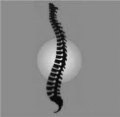New Research Sheds Light on Chiropractic and Vertigo

Recent research reporting on improvement in a 33 year old woman undergoing chiropractic care reveals that chiropractic may play an important role in managing people with vertigo and other balance disroders.
The research, reported in the Annals of Vertebral Subluxation Research, includes a review of the literature supporting the role of chiropractic in people suffering from a number of disorders that share their origin with vertigo.
“Research is revealing that there is a relationship between abnormalities in the spine, the nervous system and brain” stated Dr. Pamela Stone-McCoy, lead author of the paper. “Basic science research shows that the proper functioning of the brain relies on proper structure and movement of the spine from an early age.”
Research has shown not only that the brain relies on normal structural integrity and joint movement, but that complex neurological communication and pathways involved in helping humans balance and orient themselves in space are tied into spinal biomechanics and their related neurological pathways.
“It makes perfect sense when you think about it” stated Dr. Stone-McCoy. “Vertigo and all types of balance disorders may be related to how the entire body communicates with the brain and the most critical area for this is the spine.”
According to Dr. Matthew McCoy, a chiropractor, public health researcher and editor of the journal that published the study “People’s nervous systems need the constant stimulation of movement in order to develop and function properly. Abnormal position or movement of the spinal vertebra can develop and this can lead to nerve interference. It is this interference, called vertebral subluxations, that chiropractors correct.”
The woman reported on in the study was a 33-year-old female with Benign Paroxysmal Positional Vertigo (BPPV) who presented to her chiropractor following failed treatment by the patient’s otolaryngologist (ENT). She was prescribed medication, but refused to take it because she was nursing a baby.
The patient’s vertigo was so bad she was unable to drive herself to appointments. She was examined for the presence of vertebral subluxations by taking x-rays and measuring the functioning of her nervous system. Within three visits, the patient was able to drive herself to her visits and her symptoms had greatly improved. By the 14th visit, the patient presented symptom-free.
The researchers call for more research on chiropractic, subluxation and vertigo and balance disorders.
CLICK HERE to read the research paper
Contact Information:
Matthew McCoy DC, MPH
Annals of Vertebral Subluxation Research
http://www.vertebralsubluxationresearch.com
404.247.2550
##

Blogs
- The Chiropractic Cartel: A Look Back at Bias in Accreditation and its Imact on Today's Profession
- Inside Montana's Chiropractic Monopoly: ACA & MCA's Brazen Board Takeover
- Concerns Grow About Control of the NY State Chiropractic Board by the ACA - Use of X-ray in NY Under Threat
- Reproductive Health Information and Chiropractic Care: Navigating New Privacy Regulations
- Navigating Substance Use Disorder (SUD) Consent: What Chiropractors Need to Know













